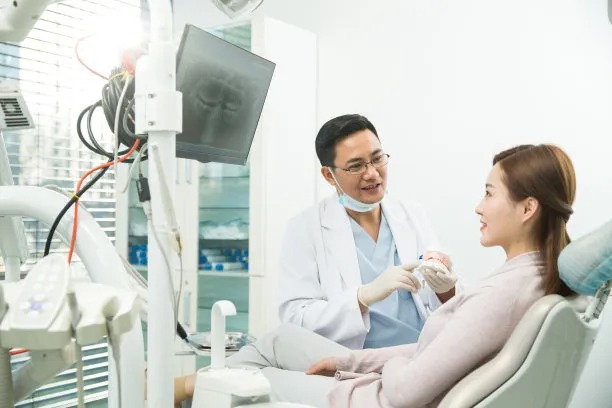The Importance of Proper Techniques and Aftercare in Extracting a Tooth for Optimal Healing and Recovery
Summary: The extraction of a tooth is a common dental procedure, yet its success hinges on the proper techniques employed during the process and the aftercare provided following the extraction. This article will explore four crucial aspects of tooth extraction: the significance of employing skilled techniques, the role of anesthesia in ensuring comfort, essential post-operative care steps, and the importance of follow-up appointments for optimal healing and recovery. By understanding these components, patients can experience a smoother recovery process, significantly reducing the risk of complications and promoting better long-term dental health.
1. Importance of Skilled Techniques in Extraction

The success of a tooth extraction largely depends on the techniques used by the dental professional. A skilled dentist knows how to approach the procedure to minimize trauma to the surrounding tissues. This involves choosing the correct extraction method, whether it be a simple extraction or a surgical one, based on the tooths condition and position.
Moreover, employing the appropriate instruments and strategies during extraction reduces pain and speeds up healing. These techniques ensure that the bone and surrounding gums remain intact, lowering the risk of complications such as dry socket, which occurs when the blood clot at the extraction site is dislodged prematurely.
Therefore, investing in a qualified dental professional who utilizes advanced methods and techniques can lead to not only a successful extraction but also a better overall recovery experience.
2. The Role of Anesthesia in Comfort
Anesthesia plays a pivotal role in the tooth extraction process, ensuring that patients experience minimal discomfort throughout the procedure. There are various forms of anesthesia available, including local anesthesia, sedation, and general anesthesia. The choice of anesthesia depends on the complexity of the extraction and the patients anxiety level.
Local anesthesia is often sufficient for simple extractions, providing targeted numbness while allowing the patient to remain fully conscious. For more complex procedures or anxious patients, sedation may be recommended to enhance comfort and relaxation. This can also prevent memories of discomfort during the procedure.
Overall, the appropriate use of anesthesia not only enhances the patient’s comfort but also allows the dentist to perform the extraction more efficiently. Anesthesia thus stands as a critical factor in the success and effectiveness of dental extractions.
3. Essential Post-Operative Care Steps
After a tooth extraction, proper aftercare is crucial to promote healing and prevent post-operative complications. Initial steps include managing pain and swelling through prescribed medications and applying ice packs to the affected area. Following the dentist’s instructions regarding pain management can significantly improve comfort during the recovery period.
Patients should also be advised on dietary restrictions following the extraction. Soft foods are generally recommended, along with avoiding hot drinks and heavy chewing for a few days. This ensures that the extraction site is not disturbed and allowed to heal properly.
Additionally, maintaining proper oral hygiene is vital. However, patients should avoid rinsing their mouth vigorously or using straws for the first 24 hours to prevent dislodging the blood clot. Gentle brushing and careful rinsing with saltwater can help keep the area clean without disrupting the healing process.
4. Importance of Follow-Up Appointments
After a tooth extraction, follow-up appointments with the dentist are essential for monitoring the healing process. These appointments allow the dentist to assess the extraction site for any signs of infection or unusual healing patterns. Timely detection of complications can prevent more serious issues, such as systemic infections or prolonged discomfort.
Furthermore, follow-ups provide an opportunity for patients to discuss any concerns or symptoms they may be experiencing. Open communication with the dentist contributes to better understanding and addressing individual healing needs. Such proactive care promotes a swift recovery and instills confidence in the patient regarding their oral health.
Regular follow-up visits also serve as preventive measures for future dental issues, enabling dentists to provide advice on improving oral hygiene and preventive care tailored to the individual’s needs.
Summary: In conclusion, the significance of proper techniques and aftercare during tooth extractions cannot be overstated. Skilled methods reduce trauma, anesthesia provides comfort, post-operative care ensures healing, and follow-up appointments are integral for ongoing health monitoring. These combined efforts lead to a more successful and less painful recovery process for patients.
Investing in these aspects can greatly influence the overall experience of tooth extraction, making it a smoother journey towards optimal dental health.
This article is compiled by Vickong Dental and the content is for reference only.


